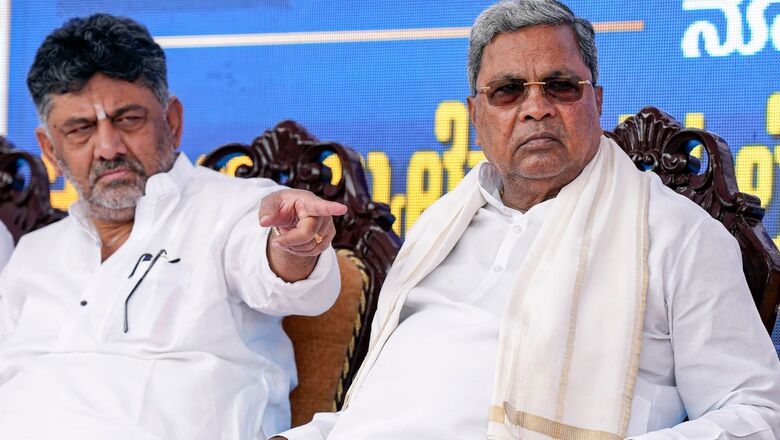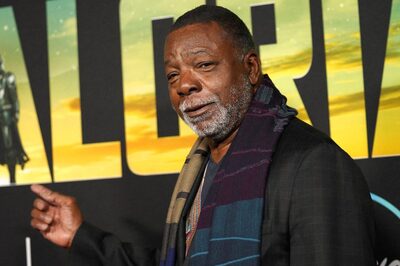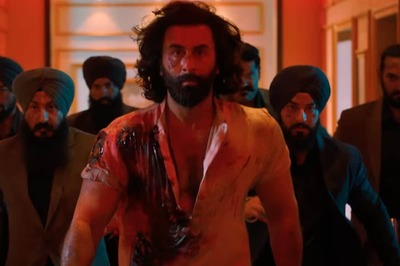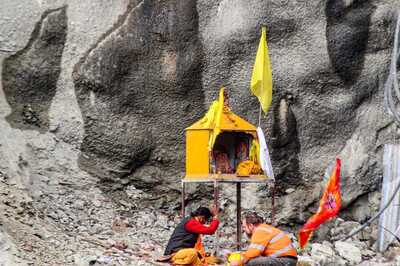
views
The Siddaramaiah-led government in Karnataka is now facing the heat from sections of the scheduled castes, with the already-delayed caste census putting the grand old party in a spot.
Leaders of the SC ‘left’ said the Congress has backtracked on its promise to implement the Sadashiva committee report, which they made during their campaign before the assembly elections last year. The state cabinet has now put the ball in the central government’s court, urging it to amend Article 341(3) to grant states the authority to implement internal reservations for the SCs.
The Justice AJ Sadashiva Commission was initiated in 2005 by the then Congress-JD(S) government to examine the necessity and methods of sub-classifying SC reservation in Karnataka.
‘Congress claims mere election ploy’
Union MoS for social justice and empowerment A Narayanaswamy, who is a Dalit BJP leader from the SC ‘left’, called out the Congress claim of implementing internal reservations after coming to power as a “mere election ploy”.
“When the Congress claimed that it will implement the Sadashiva committee report during the state polls, didn’t they know at the time that there is a need to amend Article 341? The intention was to win Dalit votes and then hang them out to dry,” he said.
On the decision of the Congress to shift responsibility to the BJP-led Centre, the union minister said there is nothing special about the state cabinet’s decision. He said although the Centre has the authority to include or exclude communities from the SC/ST list, states retain the right to request internal reservations.
“When states like Haryana, Tamil Nadu, Punjab and Andhra Pradesh can issue orders for internal reservations within hours of forming the government, why not Karnataka?” Narayanaswamy asked.
The minister further said the Justice Usha Mehra Commission report submitted in 2008 has not even been referred to and it is high time that there is some formative action to help these communities. He said as compared to the population of SC/STs in the state, the Sadashiva committee report’s reservation is less.
He added that the commission initially proposed a 15 percent reservation for SCs, but when the BJP was in power in Karnataka, the internal reservation was revised to 17 percent so as to help the ‘touchables’.
“There has been an increase in the number of ‘untouchables’ in the country, and it is an ongoing process. We are in the process of identifying exploited communities even today. Government welfare schemes, opportunities are not reaching these people but the effort is to provide socio-economic upliftment including education, creation of employment opportunities and infrastructure,” the minister said.
He added: “Article 14, 15, 16 of the Indian Constitution makes it the responsibility of the government to provide equality and equal opportunity to all, and there can be no compromise on that. If it’s not possible, the Constitution also specifies what can be done. For that, there is no need for any amendment like the Congress claims.”
Article 14 of the Constitution provides for equality in general, while articles 15 and 16 prohibit discrimination on the grounds of religion, race, caste, sex, or place of birth, and equality of opportunity in matters of public employment.
Narayanaswamy also said while there has been a lot of discussion around internal reservations for the SC/STs, it is crucial to address the issue with a correct approach. He said states such as Haryana, Himachal Pradesh, Telangana, Punjab and Andhra Pradesh have attempted to implement internal reservations, but the issue remains in the courts.
“The scheduled caste is not homogeneous. There is a need for internal reservation in the country,” he added.
The delay is seen as based on when Dr BR Ambedkar drafted the Indian Constitution, considered the SCs as heterogenous, the minister said. Consequently, he added, court judgments have argued against the necessity of internal reservations based on this premise.
“This will have implications. The Dalits believed the Congress and voted the party to power. They are now putting their hands up, which may be seen as a mark of opportunism. It may not bode well,” another SC Left leader told News18.
Did it better than Sadashiva Commission report: Bommai
The Sadashiva Commission report recommended a 6 percent reservation for the SC ‘right’ community, 5 percent for SC ‘left’, 3 percent for the ‘touchables’ (Bhovi, Lambani, Koracha and Korama castes), and 1 percent for ‘others’ (tribes). But, these recommendations were never implemented.
The previous BJP regime led by Basavaraj Bommai, through an ordinance, had increased the SC quota to 17 percent following the recommendations of the Justice Nagamohan Das Commission.
Bommai said though the issue has been lying in the courts and shelved, as a chief minister, he had the courage to take a decision and did it better than the Sadashiva Commission report by giving 6 percent reservation to the SC ‘right’, 5.5 percent to the SC ‘left’, 3.5 percent to the ‘touchables’ and 1 percent to the ‘others’.
“I took the courageous decision and implemented it… The fact of the matter is that there’s a case pending in the SC; a hearing is expected soon. These people (Congress) who say they’re on the side of social justice only pay lip service; the Congress does not want to implement it because it has been done by the BJP,” he said, adding that the party has deceived the Dalits in Karnataka.
“Siddaramaiah is a bogus AHINDA leader. In order to camouflage the Congress’s lack of development, he brings in caste or class politics,” the former chief minister said.
He alleged that Siddaramaiah did not have the welfare of AHINDA (a Kannada acronym for ‘Alpasankhyataru’ or minorities, ‘Hindulidavaru’ or backward classes, and ‘Dalitaru’ or Dalits) people in mind and made false promises of giving them justice.
“The Congress has been caught in its foul play,” Bommai said, insisting that this time Dalits will not be fooled and will teach Siddaramaiah a lesson in the upcoming Lok Sabha elections.
The controversy around internal reservations broke out after the Karnataka social welfare minister HC Mahadevappa announced that the state cabinet has decided to recommend to the Centre to amend the Constitution for internal reservations. He said: “The state governments currently only have a recommendatory function. It is only the parliament that can provide internal reservation. Unless the provisions of Article 341(3) are amended, the state government can’t provide internal reservation.”
On the previous BJP government’s decision on increasing reservation from 15 percent to 17 percent – more than what was recommended by the Sadashiva Committee report, the minister said the saffron party had put it away in cold storage and, so, it will not be possible to revive it.
What are the sub-castes among the SCs in Karnataka?
According to analysts, there is the SC ‘left’ that has historically been the most oppressed while the SC ‘right’ have enjoyed better privileges and higher representation in government jobs as well as political placements.
In Karnataka, as per the 2011 census, SCs are 17.5 percent of the population, while STs account for 6.95 percent. In assembly constituencies, 36 seats are reserved for SCs and 15 for STs.
The SC ‘left’ or the Madigas are a larger community and are involved in trades like leather work such as cobblers. The BJP enjoys the support of a section of the SC ‘left’ community, while the ‘right’ community has traditionally backed the Congress.
The party’s national president, Mallikarjun Kharge, is from the Holeya community, which is part of the SC ‘right’. Former union minister KH Muniyappa and A Narayanaswamy are from the Madiga community, which is part of the SC ‘left’. The BJP has drawn up several strategies over the years to continue to woo the ‘left’ and ‘right’ groups.
There are two other categories among the SCs – ‘touchables’ or the Banjaras and ‘others’. Though they are a much smaller group, they too are up in arms claiming that their population is high and has to fight within an allocated 1 percent, which is unfair.




















Comments
0 comment